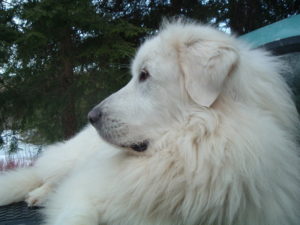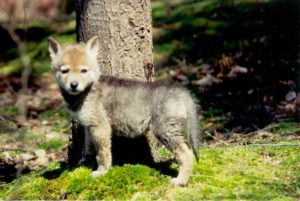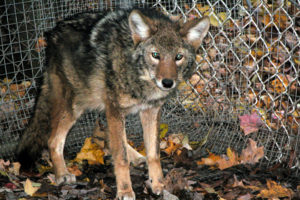A good friend and neighbor, John Merriman wrote this piece and is kindly allowing me to reprint it on my blog.
It was mentioned that “coyotes have no known predator, except man” What predator species does have a predator? Predators prey on prey, not other predators. Predators are regulated by the availability of food. The deer population is controlled by availability of food too. Has an artificially and unnaturally high population of whitetails in the hunting areas raised the browseline so high that now deer must migrate into the suburbs (where there is limited hunting) to browse on gardens, Christmas tree farms and suburban trees and grasses? Have they had to come into farmers fields for food, and those farmers obtained nuisance permits to kill them?
Coyotes are mousers. They are a farmers best friend as they prey on rodents and woodchucks and rabbits, not cattle and horses. How many farmers do you know that would love to have the woodchucks gone? Hire a coyote.
 A good guard dog will protect your livestock. Try a Great Pyrenees — they will protect your sheep, goats and alpacas from stray domestic dogs (the real threat) and curious coyotes. While coyotes do take some deer, they are mostly compromised, young and infirm. How many deer wind up with slugs and broadheads lodged in their spines after hunting season? I have personally seen more than a few that are succumbing to the gangrene and infection during and after the season. How many deer are hit by cars, and while they appear to bound off looking well are actually mortally wounded with internal injuries or fractured pelvises? People who claim to have seen coyotes taking healthy deer don’t really know that the deer was healthy and not injured or starting a disease process that was not visible to the human eye. Did they frighten the coyotes away, do a complete necropsy, send tissue and organ samples, x-rays and determine “yes, this was a perfectly healthy deer” I think not.
A good guard dog will protect your livestock. Try a Great Pyrenees — they will protect your sheep, goats and alpacas from stray domestic dogs (the real threat) and curious coyotes. While coyotes do take some deer, they are mostly compromised, young and infirm. How many deer wind up with slugs and broadheads lodged in their spines after hunting season? I have personally seen more than a few that are succumbing to the gangrene and infection during and after the season. How many deer are hit by cars, and while they appear to bound off looking well are actually mortally wounded with internal injuries or fractured pelvises? People who claim to have seen coyotes taking healthy deer don’t really know that the deer was healthy and not injured or starting a disease process that was not visible to the human eye. Did they frighten the coyotes away, do a complete necropsy, send tissue and organ samples, x-rays and determine “yes, this was a perfectly healthy deer” I think not.
There is nothing wrong with coyotes taking down those injured , ill, dying and dead deer. That is what a predator does.
What about turkeys? One virus can wipe out an entire flock. Do we want the “slow one” removed from the flock to protect flock integrity and guard against disease in the flock? You bet we do. Coyotes will weed out the slow one that is possibly beginning a disease process. Turkey’s are smart, they are designed to avoid predators. The rest of the flock will fly to safety, and be the wiser.
Ask some people, they will tell you there are too many deer – So which is it? I know several tree farmers who were brought to their knees by deer browsing their stock. Ask anyone who has hit a deer with their car, some people have already been killed in such accidents. Ask the automobile insurance agents how they feel about the deer population. Have we bred a smarter deer through natural selection- shooting the ones that walk into the sights of our guns, and not shooting the ones that are more wary, travel to protected lands or adopt a more nocturnal lifestyle once hunting season begins?
Have we bred a lazier hunter through instant gratification in other areas of our lives, where patience and time are limited? How many hunters actually have the time to spend out scouting, sighting in their guns, sitting for hours in a tree stand? Not if you have a full time job and a family these days. Life is faster in 2006 than it was in 1980, 1970, 1960 and so forth. How many of the “no deer” complainers have spent the time to really hunt their deer – sitting in the same tree stand year after year, do these guy’s realize that deer move to find new food sources? Have their woods changed over time with natural succession and are their stands really where there are deer anymore?
While there are genuinely good hunters out there who practice their shooting, do the scouting, spend the time watching, even selecting their specific deer, there are more than a few who do none of this. They take opening day off to go and then blame and point fingers at everyone and everything when they don’t bring a deer home to their family. Are the coyotes to blame? Of course not.
Now, Coyote Control? Certainly not by hunting and trapping and otherwise killing them. Again, biological fact is that this actually stimulates the population. Coyotes under pressure from hunting and trapping increase their litter size, the viability of the pups is much greater and the survivability of the pups is astounding. Coyotes with larger litters and stronger pups will need more and larger prey to feed those larger litters. When the alpha female is killed, instead of her being the only breeding female in a territory, all of the subordinate females who were behaviorally sterile before can and will now breed. Where there would have been only one litter, now there are four. Hmmm…. so killing creates more. Will killing coyotes result in more deer? Not according to study after study and history.
In keeping with the finger-pointing theory that “coyotes are killing all the deer”, it will actually result in less deer as larger litters and more viable pups will need “more fawns” to raise them. Ask anyone who hunts coyotes, they will tell you that they get the same numbers of coyotes year after year in the same places. Nature abhors a vacuum and more coyotes take their place. If killing them actually worked, why can these guys hunt the same areas year after year and take the same numbers of coyotes. Wouldn’t the population of coyotes in that area disappear, thanks to their hard work? In conclusion, there are many reasons why deer hunters aren’t getting their deer, coyotes being only the most minor factor. If you want more deer and less coyotes, leave the coyotes alone and plant trees and food plots for the deer.
 As a wildlife professional I was sickened by the treatment the injured coyote at the Macedon plaza received from Rochester, NY animal control , police and of course, the hunters themselves. I was also disappointed with the news report and sensationalism that made it seem as though coyotes are dangerous and a problem. Even worse, I am sickened by the coyote hunting that is allowed to go on. This hunting and killing is creating the very problems that the hunters claim to be trying to solve. To make things worse, the coyote was dragged with a noose across the parking lot and thrown into a cage on the back of the hunters truck, then taken out later and shot or “euthanized” as the press wrote. what a horrible, tragic death for this animal that has done no wrong.
As a wildlife professional I was sickened by the treatment the injured coyote at the Macedon plaza received from Rochester, NY animal control , police and of course, the hunters themselves. I was also disappointed with the news report and sensationalism that made it seem as though coyotes are dangerous and a problem. Even worse, I am sickened by the coyote hunting that is allowed to go on. This hunting and killing is creating the very problems that the hunters claim to be trying to solve. To make things worse, the coyote was dragged with a noose across the parking lot and thrown into a cage on the back of the hunters truck, then taken out later and shot or “euthanized” as the press wrote. what a horrible, tragic death for this animal that has done no wrong.


